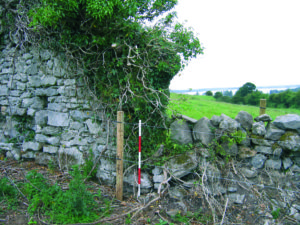The story of a rare medieval deer park in County Galway has been published by an IT Sligo lecturer.
Dr. Fiona Beglane, who is a lecturer of archaeology at the Institute and a consultant zooarchaeologist, has examined the archaeological and historical evidence for a 13th-century deer park at Earlspark, Loughrea, Co. Galway.
This is the first detailed study of an Irish Anglo-Norman-period park, and appears in the international journal Medieval Archaeology.
The site, which was first identified by Dr. Beglane in 2009, is located two kilometres south-east of Loughrea, and is exceptionally well preserved. It is documented in 1333, along with its deer, and field survey in the area has identified the park, which is still surrounded by a mortared stone wall 7.4 km long and standing up to 2.6 m in height.
Dr. Beglane has spent a number of years researching this and other medieval parks in Ireland. “Large medieval parks such as the one at Earlspark, which is 913 acres in size, were designed as places to keep deer,” she explains. “They provided a source of venison for the lord’s table and were used for hunting and other leisure activities.”
A radiocarbon date from a sample of charcoal in the mortar of the park wall showed that it had been built between 1251 and 1297. The date range lies perfectly between the founding of the town of Loughrea by Richard de Burgh in 1236 and the documentary evidence of the park being in existence by 1333.
“This was the ultimate status symbol of its day, something like owning a private jet or a yacht,” says Dr. Beglane. “To build it today would cost around €7 million excluding land costs.”

The site of the medieval deer park near Loughrea, Co. Galway.